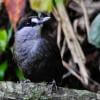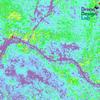Despite critical advancements in the tech solutions available to conservationists worldwide, many existing tools are cost-prohibitive in the landscapes that need them most. Additionally, those who create low-cost and open-source alternatives to pricey market tech often operate on tight budgets themselves, meaning they need more resources to promote their solutions to a broader market. We need increased communication around these solutions to highlight their availability, share lessons learned in their creation, and avoid duplication of efforts.
This group is a place to share low-cost, open-source devices for conservation; describe how they are used, including what needs they are addressing and how they fit into the wider conservation tech market; identify the obstacles in advancing the capacity of these technologies; and to discuss the future of these solutions, particularly their sustainability and how best to collaborate moving forward. We welcome contributions from both makers and users, whether active or prospective.
Here is how we see the current OSS space and how this group plans to change it by supporting both makers and users:
Many users do not appreciate the significant benefits of open-source tech. This group will educate users about the advantages and the need for open-source tech, specifically in the context of ecology work. We achieve this by stimulating regular discussions on the forum and by encouraging and supporting users to use open-source tools wherever possible.
Building OSS can be difficult. We want to support both established and potential makers who wish to develop OSS. The OSS group is a place where makers can find funding opportunities, ask current and potential users questions, and share their technologies.
Using OSS can be difficult. We also want to support adopters of OSS tech. We do this by offering a place for users to share challenges they face and crowdsource advice on things like technology choice or technical support.
Makers do not know what users want or need. The OSS group is a place that facilitates conversations between makers and users. This will give users a voice and ensure that makers are aware of the needs of users, enabling them to build better solutions.
The community is small and scattered. We want to grow an inclusive community of OSS practitioners. Our goal is to become the go-to place for discussions on the topic where people feel a sense of belonging.
Resources for getting started
- How do I use open source remote sensing data in Google Earth Engine? | Tech Tutors
- How do I use open source remote sensing data to monitor fishing? | Tech Tutors
- Low Cost, Open Source Solutions | Virtual Meetup
- What would an open source conservation technology toolkit look like? | Discussion
- December 2024 Open Source Solutions Community Call
Header image: Shawn F. McCracken
Group curators
- @Nycticebus_scientia
- | he/they
MammalWeb.org
Co-founded citizen science camera-trapping project with interest in developing 100% open source wildlife tech. Advocate for open science/open research. Former Community Councilor of the Gathering for Open Science Hardware.



- 4 Resources
- 25 Discussions
- 3 Groups
trying to understand and improve the welfare of all animals that can suffer


- 4 Resources
- 6 Discussions
- 7 Groups
- @briannajohns
- | she/they
Gathering for Open Science Hardware (GOSH)
Interested in the application of open source technologies for conservation research.



- 9 Resources
- 5 Discussions
- 4 Groups
No showcases have been added to this group yet.
- @ahmedjunaid
- | He/His
Zoologist, Ecologist, Herpetologist, Conservation Biologist





- 74 Resources
- 7 Discussions
- 25 Groups
- 0 Resources
- 0 Discussions
- 5 Groups
- @PhilAtkin
- | He/Him
Embedded software developer of 40+ years experience, hardware designer.



- 3 Resources
- 22 Discussions
- 6 Groups
- @Dauson_M
- | Mr
Dauson Msumange is a social enterpreneur, founder and director of Tanzania Eco-Tech And Conservation Hub (TEACH).

- 0 Resources
- 1 Discussions
- 23 Groups
- @team
- | team
Make the stories that make this life worth living.

- 0 Resources
- 2 Discussions
- 6 Groups
- @nickjourjine
- | He/Him
Harvard University & University of Zurich
Postdoctoral researcher using passive acoustic monitoring, bioinformatics, and automated behavior tracking to understand animal sociality and its evolution. Interested in collaborations that bridge basic research and conservation.

- 0 Resources
- 1 Discussions
- 5 Groups
- @Freaklabs
- | He/Him
Freaklabs
I'm an engineer and product designer working in conservation technology. I specialize in technology for landscape restoration and wildlife behavioral ecology.



- 1 Resources
- 307 Discussions
- 20 Groups
Associate professor at the University of Cincinnati. Interested in building tech for research and animal welfare.
- 0 Resources
- 0 Discussions
- 4 Groups
- @crazybirdguy
- | Him
Field Biologist at Yayasan Cikananga Konservasi Terpadu, Indonesia, with experience and interest mainly in ornithology, citizen science and bioaccoustic

- 0 Resources
- 10 Discussions
- 12 Groups
Soil science, droughts effect of poverty, human rights advocate, wage equality in Europe, Drones in Digital Education




- 4 Resources
- 11 Discussions
- 18 Groups
- @Anandi7316
- | she / her
Ecologist, Doctoral researcher @ ARI-Pune | Biodiversity- rock outcrops ecology
- 0 Resources
- 0 Discussions
- 8 Groups
- @Cteodorski
- | He/Him
Tech guy turned conservation nerd. Prototyping LoRa + solar sensor systems to help monitor wildlife where Wi-Fi and roads don’t reach.
- 0 Resources
- 2 Discussions
- 5 Groups
The Marine Innovation Lab for Leading-edge Oceanography develops hardware and software to expand the ocean observing network and for the sustainable management of natural resources. For Fall 2026, we are actively...
24 July 2025
Lead a growing non-profit to sustain open source solutions for open science!
19 July 2025
In this case, you’ll explore how the BoutScout project is improving avian behavioural research through deep learning—without relying on images or video. By combining dataloggers, open-source hardware, and a powerful...
24 June 2025
Weeds, by definition, are plants in the wrong place but Weed-AI is helping put weed image data in the right place. Weed-AI is an open source, searchable, weeds image data platform designed to facilitate the research and...
7 May 2025
Bringing you the latest in open-source technology for agriculture. This accompanies the Open Source Agriculture respository: Collating all open-source datasets, software tools and deployment platforms related to open-...
1 May 2025
Repository for all things open-source in agricultural technology (agritech) development by Guy Coleman. This accompanies the OpenSourceAg newsletter. Aiming to collate all open-source datasets and projects in agtech...
1 May 2025
Fires in Serengeti and Masai Mara National Parks have burned massive areas this year. With Google Earth Engine, it's possible to quantify burn severity using the normalized burn ratio function, then calculate the total...
29 April 2025
Conservation International is proud to announce the launch of the Nature Tech for Biodiversity Sector Map, developed in partnership with the Nature Tech Collective!
1 April 2025
Modern GIS is open technology, scalable, and interoperable. How do you implement it? [Header image: kepler.gl]
12 March 2025
Join the FathomNet Kaggle Competition to show us how you would develop a model that can accurately classify varying taxonomic ranks!
4 March 2025
Last month, we spent four days trekking through Cerro Hoya National Park in Panama, where we hiked from near sea level up to the cloud forest to deploy Mothboxes.
14 February 2025
August 2025
event
September 2025
event
event
October 2025
event
September 2024
| Description | Activity | Replies | Groups | Updated |
|---|---|---|---|---|
| Yep we are working on it 1/ segment 2/remote unwanted ecosytem3/get local potential habitat4/generate5/add to picture |
|
Geospatial, AI for Conservation, Data management and processing tools, Open Source Solutions, Software Development | 4 months 2 weeks ago | |
| All sound, would be nice if there were only 5, though! |
|
AI for Conservation, Citizen Science, Data management and processing tools, Emerging Tech, Ethics of Conservation Tech, Funding and Finance, Geospatial, Open Source Solutions, Software Development | 4 months 3 weeks ago | |
| It's great to see so much interest in presenting at this webinar. We have also received interest through direct messages and meetings that we've happened to have had. Thank you... |
|
Open Source Solutions, Community Base, Funding and Finance | 5 months 1 week ago | |
| Thanks again for the interesting discussion everyone! Just a note that while I touched on it in my opening post above, there were still questions in this thread about what... |
+28
|
Open Source Solutions, AI for Conservation, Ethics of Conservation Tech, Software Development | 5 months 1 week ago | |
| Thanks @VAR1 great insights! Funny you mentioned the honey thing, @hikinghack said the same in response on the GOSH forum. I think the point I'm trying to make with the vegan... |
|
Open Source Solutions, AI for Conservation, Conservation Tech Training and Education, Ethics of Conservation Tech, Geospatial, Software Development | 5 months 1 week ago | |
| Sure, Akio! Happy to answer!1. Yes, something like that. The few existing i guess applied already for GPS collar (literally collar) that usually for big cats and some other big... |
|
Sensors, Animal Movement, Open Source Solutions | 5 months 1 week ago | |
| How much does it cost to incorporate machine learning into your conservation drone geospatial analysis? How does it speed up your workflow... |
|
Conservation Tech Training and Education, Drones, Geospatial, Open Source Solutions, Sensors, Software Development | 5 months 2 weeks ago | |
| Another question. Right now pretty much all camera traps trigger on either PIR sensors or small AI models. Small AI models would tend to have a limitation that they would... |
|
AI for Conservation, Camera Traps, Data management and processing tools, Open Source Solutions, Software Development | 6 months ago | |
| Hi Lorenzo,I highly recommend the OpenSoundscapes package (developed by the Kitzes Lab at U Pittsburgh) - there are workflows to build your own CNNs there, the documentation is... |
|
Acoustics, AI for Conservation, Animal Movement, Open Source Solutions | 6 months 1 week ago | |
| Thanks! I am familiar with EarthRanger but wasn't aware it could be used for behavioural data collection |
+6
|
Build Your Own Data Logger Community, Data management and processing tools, Open Source Solutions | 6 months 1 week ago | |
| Steve and I are looking to develop a low-cost benthic drift camera with a live video feed. Our hope is to use an acoustic modem to give us a low quality feed for navigation /... |
|
Marine Conservation, Build Your Own Data Logger Community, Connectivity, Emerging Tech, Open Source Solutions | 7 months 4 weeks ago | |
| Today, I'm really grateful for the chance to present at the first WILDLABS Open Source Solutions online community meeting. Here are two... |
|
Open Source Solutions | 8 months 1 week ago |
Mothbox Updates: field tests, canopy tower deployment, and fashion fundraiser!
19 December 2024 2:52pm
Announcement of Project SPARROW
18 December 2024 8:01pm
Underwater wireless communication
9 December 2024 1:32pm
16 December 2024 6:59pm
It's probably much easier to find a company selling acoustic modems than to try and create your own...very challenging environment to work within. I have about 10 years working with underwater acoustics (as a non-engineer).
17 December 2024 1:50pm
To give you the best advice, I need a bit more information about your specific application. Underwater communication typically relies on acoustic modems because radio waves don't travel well through water. For longer distances, a hybrid solution is often used. This could involve an acoustic modem transmitting data from your underwater sensor to a surface buoy or platform. The buoy could then relay the data to shore using traditional radio communication, such as 900MHz radios (even commercially available options like Ubiquiti radios, depending on distance and line-of-sight). To help me understand your needs and recommend the right approach, could you tell me more about:
Data Rate Requirements: How much data do you need to transmit, and how often?
Range: What is the vertical distance between your sensor and the surface receiver?
Environment: Are you working in shallow or deep water? What is the water temperature, salinity, and expected noise level?
Power Budget: How much power is available for the underwater sensor and modem?
Cost: What is your budget for the acoustic modem system?
Integration: How will you integrate the modem with your sensor and surface receiving system?
Real-time or Delayed: Do you need the data in real-time, or can it be stored and transmitted later?
18 December 2024 11:56am
Steve and I are looking to develop a low-cost benthic drift camera with a live video feed. Our hope is to use an acoustic modem to give us a low quality feed for navigation / hazard avoidance. This could be as simple as a small black and white image refreshed every 1 sec. What we need to know from the system is are we at the bottom? and are we about to hit an obstacle?
Data Rate Requirements: A very low quality (360p) video stream - could be black & white and low fps to reduce bit rate requirements (hopefully 1kbps)
Range: At least depth 500m but ideally down to 2,000m (deployed below a vessel from a tether)
Environment: Deep water temperature range down to 0C. Open ocean salinity levels (33-35 psu). Limited noise apart from deployment vessel (engine & echosounder)
Power Budget: Transmitter must be powered by a battery capable of continuous working for at least 1 hour.
Cost: Ideally under £1000 (GBP) for the transmitter & receiver.
Integration: Don't know. We are hoping to plug into an arduino or equivalent.
Real-time or Delayed: We need real time transmission with very limited lag for slow moving obstacle avoidance.
It's a big ask, but any pointers would be very welcome
October + November 2024 OSS paper round-up
15 December 2024 7:05pm
Talk - Open source hardware for more equitable and sustainable conservation science
4 December 2024 5:54pm
Open Sustainable Technology directory
2 December 2024 4:17pm
Catch Up With the first Open Source Solutions Community Meeting!
 Pen-Yuan Hsing
and 2 more
Pen-Yuan Hsing
and 2 more
21 November 2024 1:56pm
21 November 2024 4:44pm
Computer Vision Developer
20 November 2024 10:39pm
Mothbox Updates: Recap of our Mothbox v4.5 workshop in Atlanta
13 November 2024 2:24pm
Automatic extraction of temperature/moon phase from camera trap video
29 November 2023 1:15pm
7 September 2024 9:44am
I just noticed that TrapTagger has integrated AI reading of timestamps for videos. I haven't had a chance to try it out yet, but it sounds promising.
28 October 2024 7:30pm
Small update. I uploaded >1000 videos from a spypoint flex camera and TrapTagger worked really well. Another program that I'm currently interested in is Timelapse which uses the file creation date/time. I haven't yet tried it, but it looks promising as well.
1 November 2024 12:29pm
Hi Lucy,
I now realised it is an old thread and you most likely have already found a solution long ago but this might be of interest to others.
As mentioned previously, it is definitely much better to take moon phase from the date and location. While moon phase in general is not a good proxy for illumination, that moon phase symbol on the video is even worse as it generalises the moon cycle into a few discreet categories. For calculating moon phase you can use suncalc package in R but if you want a deeper look and more detailed proxy for moonlight intensity, I wrote a paper on it
Biologically meaningful moonlight measures and their application in ecological research | Behavioral Ecology and Sociobiology
Light availability is one of the key drivers of animal activity, and moonlight is the brightest source of natural light at night. Moon phase is commonly us
with accompanying R package called moonlit
GitHub - msmielak/moonlit: moonlit - R package to estimate moonlight intensity for any given place and time
moonlit - R package to estimate moonlight intensity for any given place and time - msmielak/moonlit
When it comes to temperature I also agree that what is recorded in the camera is often very inconsistent so unless you have multiple cameras to average your measurements you are probably better off using something like NCEP/NCAR Reanalysis (again, there is an R package for that) but if you insist on extracting temperature from the picture, I tried it using tesseract and wrote a description here:
Good luck!
Can wireless charging technology be used for animal sensors?
17 October 2024 7:03am
23 October 2024 3:43pm
The results in the paper you mentioned are really exciting technology. It can really do a lot of things.
Thanks for your reply!
23 October 2024 4:00pm
Although this technology may not be mature now, and there are still many problems to be discussed and solved, I think it will have good application prospects.
Unfortunately, I am just an undergraduate student in China, and what I can do is very limited. Maybe in the future I can also do some similar research or what I want to do. Just like you, I am studying hard now.
Thank you very much for this forum and the professionals who responded to me. You have allowed me to see more perspectives and many things I didn't realize. Thank you very much!
28 October 2024 3:13pm
No problem at all Yu (@JY) and good luck with your studies! Happy to discuss this and any other ideas any time.
All the best,
Rob
Getting a Software Job in Conservation
25 October 2024 9:18pm
ClimateTriage
22 October 2024 9:16am
Open Sustainable Technology
22 October 2024 9:12am
Recycled & DIY Remote Monitoring Buoy
15 January 2024 1:14am
3 October 2024 9:16am
Hi Brett,this ocean lab sychelles is great to hear from you! I love your remote monitoring buoy project, especially the recycling of DFAD buoys and the design of custom-built ones that are full of interesting features. The expandability of the navigation buoys enabling it to be configured as hydrophones, cameras, or water quality monitors is a great feature. The technical marvels, such as recycling DFADs' circuits, making your own hydrophone, and designing a super-efficient system, are terrific. Moreover, it is encouraging to witness the deployment of your early system, particularly the live video and water quality data you have collected. You will definitely make a positive impact on the Wildlabs community with your knowledge of electrical engineering and software development. I care to hear more of your discoveries and any news that you will be sharing. Keep doing what you excel at!
8 October 2024 8:46am
Thank you for sharing!
21 October 2024 12:45am
Hi Brett,
I am interested in developing really low cost multi channel underwater acoustic recorders. Can you tell me a bit more about the board and stuff you were using for yours? You can get me at chris@wilcoanalytics.org.
Thanks,
Chris
Resources wanted to advise on the business model of an emerging low-cost device
27 September 2024 5:32am
13 October 2024 11:13pm
Dear @jared ,
Thank you so much for your answer. We have been focusing very deeply into the technology part of the challenge and not yet on the legal issues or product lifecycle. Definitely a lot of food for thoughts there.... thanks!
13 October 2024 11:13pm
Dear @jared ,
Thank you so much for your answer. We have been focusing very deeply into the technology part of the challenge and not yet on the legal issues or product lifecycle. Definitely a lot of food for thoughts there.... thanks!
14 October 2024 3:36am
Jared's answer is excellent IMHO. One level down, you have a couple of options. One is to charge for the convenience of buying a finished, assembled, and tested product, that's for the folks that have money and no time. Those that have time but no money can build it themselves from the open source. One danger to this approach is if low cost chinese clones come on the market, whether they do probably depends a lot on the size of the market.
Another option is to withhold some 'pro/plus' feature from the open source, that depends on whether you can identify such features. A similar option is to offer features that big outfits with good funding need. For example, you could offer calibrated versions at a premium, if that's applicable and needed by such organizations. In many cases companies sell devices cheap that are usable by someone who one has one or a couple and then charge for a management system for those that have dozens or hundreds of devices, dunno whether this applies to your case. All this comes down to whether you can segment your customer base so you can create premium features for the wealthy segment.
MS and PhD Opportunities in Ocean Engineering and Oceanography
6 October 2024 9:44am
September 2024 OSS paper round-up
3 October 2024 5:51pm
Support no-code custom AI for camera trap images by filling out this survey
2 October 2024 10:43pm
Project Spotlight: SnapperGPS
1 October 2024 2:29pm
August 2024 OSS paper round-up
15 September 2024 8:59pm
Global model for Livestock detection in airborne imagery - Data, Applications, and Needs
12 August 2024 8:19pm
4 September 2024 6:15pm
It looks like the website has not been updated since 2022 and indeed you need to register. If you go under 'Manage Account' you may be able to register. I tried to register but I got an error saying 'Login failed! Account is not active'. I got an email saying "Your account must be approved before being activated. Once your account has been approved, you will be notified." So I am waiting for the account to be approved...
I'll keep you posted
6 September 2024 12:46pm
Hi Ben!
Great initiative!
A review of deep learning techniques for detecting animals in aerial and satellite images
https://www.sciencedirect.com/science/article/pii/S1569843224000864#b0475
lists a number of data sets (incl. one published by you it seems...)
Also, @dmorris keeps a list of Terrestrial wild animal images (aerial/drone):
https://lila.science/otherdatasets#images-terrestrial-animals-drone
List of other conservation data sets - LILA BC
LILA BC - List of other conservation-related data sets
which seem like it might be useful for you.
9 September 2024 8:10pm
Hi @benweinstein !
- Surely a general detector might be very useful for detecting objects in aerial imagery! Maybe something similar to what MegaDetector does in camera trap images, generally detecting person, animal, and vehicle (and thus also empty photos). This could greatly improve semi-automated procedures. It could also serve as a first step for context-specific detectors or classifiers to be developed on top of this general one.
- There is also the WAID dataset that is readily available. Our research group could also provide images containing cows, sheep, and deer from South America.
Best
WCS Conservation Technology Webinar Series
23 August 2024 3:20pm
23 August 2024 7:04pm
23 August 2024 8:30pm
WILDLABS Virtual Meetup: Bioacoustics Data Analysis and AI
22 August 2024 7:22pm
WILDLABS Virtual Meetup: Bioacoustics Data Networks and Platforms
22 August 2024 5:45pm
Project Spotlight: OpenFlexure Microscope
22 August 2024 11:04am
Community Choice Award Winners: 2024 #Tech4Wildlife Photo Challenge
15 August 2024 2:41am
Cast your vote in the #Tech4Wildlife Photo Challenge Community Choice Awards!
12 August 2024 1:46pm
12 August 2024 9:15pm
13 August 2024 11:26am





























































3 January 2025 6:48pm